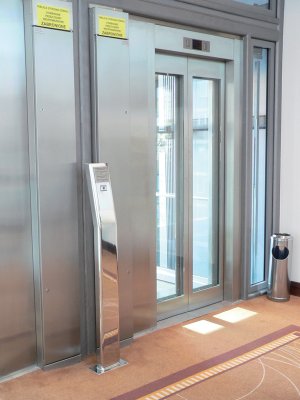A BIT OF HISTORY
The steam powered machine invented by Otis has been rightly considered the first proper elevator for public use. It was equipped with the braking system that would prevent the fall of the elevator car if the cable broke. That, in turn, could ensure relative safety of passengers. It turned out to be a real breakthrough in the construction of elevators viewing that they were formerly powered by animals, water or humans.
Still, the major turning point came in the late nineteenth century when German inventor, Werner von Siemens, built the first electric elevator. Unsurprisingly, electric-powered elevators soon became a standard followed by other engineers. Over the years, numerous improvements to their design, speed and safety have taken place, thereby ushering in the age of breathtaking skyscrapers.
Interestingly, today's elevators can travel up to 40 km/h and some can even hold up to 60 people.
THE ELEVATOR DESIGN
With skyscrapers growing taller and taller, elevators will have to keep up. In addition, it goes without saying that the taller the building, the more elevators it requires. Unfortunately, every elevator shaft takes up a lot of room. Too many of them may reduce the profitability of the building.
To provide a more efficient solution, architects have come up with non-standard designs of elevators, suitable even for extremely tall buildings. The most popular is the one in which there are more than one lobby. The bottom floor lobby has express elevators that take passengers to upper lobbies. These involve the elevators to the floors in a particular section of the building. Another method to be used in skyscrapers is a double-deck elevator. Not only does it hold a great number of people, but it also reaches two floors at every stop. Finally, there might be several elevators that all meet at the bottom floor but each of them goes to certain floors.
All these designs, dividing the building into sections, are undoubtedly more efficient, and therefore more common in today’s skyscraper constructions.

GLOSSARY:
skyscraper – drapacz chmur, wieżowiec
elevator – winda
floor – piętro
inconvenient – niewygodny w użyciu
department store – dom towarowy
to allow – umożliwiać
to affect – wpływać na
steam powered – o napędzie parowym
proper – właściwy, odpowiedni
to be equipped with – wyposażony w
braking system – układ hamulcowy
elevator car – kabina windy
relative safety – względne bezpieczeństwo
breakthrough, turning point – przełom, punkt zwrotny
formerly – dawniej
improvement – ulepszenie
to usher in – zapoczątkowywać
to keep up – nadążać za czymś
it goes without saying – nie ulega wątpliwości
elevator shaft – szyb windy
to take up a lot of room – zajmować dużo miejsca
profitability – rentowność
lobby – hol windowy
double-deck – dwupokładowy
several – kilka
certain – pewny, określony




